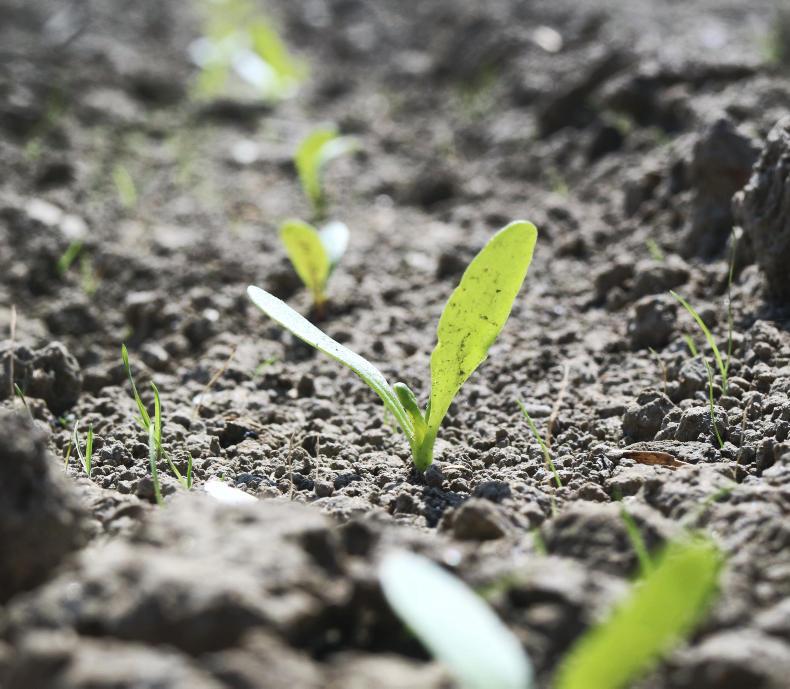While this week’s rain will be welcomed in many tillage fields, it will also assist weeds to germinate and grow. This is especially true for fields of freshly planted sugar and fodder beet.
Beet planting is still ongoing in some areas, but many have now finished. It is expected that the area of beet will be back on last year.
Conditions are dry, but the forecasted moisture this week will cause weeds to flourish. Beet competes poorly with weeds, especially when at the seedling stage.
The British Beet Research Organisation (BBRO) suggests that yields can be reduced by 11% or more by just one tall weed (for example, volunteer oilseed rape, fat hen or redshank) for each 1m² of the crop.
Severe weed infestations in untreated plots can reduce yields by up to 90%.
Timings
Beet crops generally require two herbicide applications 10 to 14 days apart, but some early-sown crops or crops with difficult weeds may require three applications.
The time for the first weed control application is here for many crops. Growers will remember how challenging weed control was in 2018.
Due to drought conditions, soil-acting residual herbicides became inactive in the dry soil. This week’s rain should help prevent the same situation from arising again.
T1 herbicides should be applied when the rows are visible in the crop. This timing can range from when the crop is 30% emerged to the mid- to late-cotyledon stage.
Difficult-to-control weeds must be controlled early or else they will prove to be a challenge to control as the weed increases in size.
A balance will have to be struck between targeting the weeds and reducing the chemical load on the crop at the first timing to protect emerging plants.
Options
Table 1 below outlines some of Teagasc’s options for T1 herbicides for beet this season. Remember that products containing desmedipham (Betanal MaxxPro, Farmco Trio, Sniper and Trilogy) can not be used after 1 July 2020.






 This is a subscriber-only article
This is a subscriber-only article









SHARING OPTIONS: